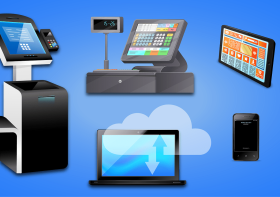Open Source IoT Platforms: Advantages, Overview, And Popular Alternatives

The Internet of Things has revolutionized how we live and work by connecting devices to the internet and making them smarter. However, developing IoT solutions requires an IoT platform to manage data, devices, and applications. An IoT platform is a software solution enabling communication and integration between IoT devices, applications, and networks. In the realm of the IoT, Intelligent OCR plays a pivotal role by seamlessly integrating advanced optical character recognition with contextual understanding, enabling efficient extraction of meaningful data from diverse devices and sensors There are various types of IoT platforms, including proprietary and open source platforms. This blog post will explain the advantages of open source IoT platforms, an overview of open source IoT platforms, and popular alternatives to open source IoT platforms.
I. Introduction
A. Definition of IoT platform
An IoT platform is a software solution that provides a set of services and tools for developing, deploying, and managing IoT solutions. It includes functionalities like data management, device management, application management, and security.
B. Importance of IoT platforms for IoT solutions
An IoT platform is essential for developing, deploying, and managing IoT solutions. It acts as the backbone of IoT solutions, providing the necessary infrastructure for data collection, analysis, and visualization.
C. Advantages of open source IoT platforms
Open source IoT platforms offer several advantages over proprietary platforms. Firstly, they are cost-effective, as they are free to use and do not require expensive licensing fees. Secondly, they provide a high level of customizability, allowing developers to modify and enhance the platform according to their needs. Finally, they are backed by a large community of developers who give support and share knowledge.
II. Overview of Open Source IoT Platforms
A. Explanation of open source software
Open source software are the software whose source code is publicly available and can be modified and distributed by anyone. This means that developers can customize and enhance the software to meet their specific needs.
B. Comparison of open source vs proprietary IoT platforms
Open source IoT platforms offer several advantages over proprietary platforms, such as cost-effectiveness, customizability, and community support. On the other hand, proprietary IoT platforms offer better security, as they are maintained by a single vendor and are subject to rigorous testing and certification.
C. Examples of open source IoT platforms
Some popular open source IoT platforms include Eclipse IoT, Thingsboard, Kaa IoT, and OpenIoT.
III. Advantages of Open Source IoT Platforms
A. Cost-effective
Open source IoT platforms are free to use and do not require expensive licensing fees. This makes them a cost-effective solution for developing and deploying IoT solutions.
B. Community support
Open source IoT platforms are backed by a large community of developers who provide support, share knowledge, and contribute to the platform’s development. This ensures that the platform is continuously updated and enhanced, providing a high level of reliability and performance.
C. Customizability
Open source IoT platforms offer a high level of customizability, allowing developers to modify and enhance the platform to meet their specific needs. This means that developers can add new features, integrate with other systems, & customize the user interface to make it more user-friendly and intuitive.
D. Security
Open source IoT platforms are subject to rigorous testing and scrutiny by the community, which ensures that any vulnerabilities or security issues are quickly identified and resolved. This provides a high level of security for IoT solutions developed on open source IoT platforms.
IV. Popular Alternatives to Open Source IoT Platforms
A. AWS IoT
AWS IoT is a proprietary IoT platform offered by Amazon Web Services. It provides a wide range of services for developing and deploying IoT solutions, including device management, data management, and analytics.
B. Google Cloud IoT Core
Google Cloud IoT Core is a managed IoT platform offered by Google Cloud. It provides a range of services for developing and deploying IoT solutions, including device management, data management, and security.
C. Microsoft Azure IoT Central
Microsoft Azure IoT Central is a managed IoT platform offered by Microsoft. It provides a range of services for developing and deploying IoT solutions, including device management, data management, and analytics.
D. IBM Watson IoT
IBM Watson IoT is a managed IoT platform offered by IBM. It provides a range of services for developing and deploying IoT solutions, including device management, data management, and analytics.
V. Conclusion
A. Recap of advantages of open source IoT platforms
Open source IoT platforms offer several advantages, such as cost-effectiveness, customizability, community support, and security. These advantages make open source IoT platforms an attractive option for developing and deploying IoT solutions.
B. Final thoughts on choosing the right IoT platform
When choosing an IoT platform, it is important to consider the specific needs of your IoT solution, along with factors such as cost, customizability, and security. Open source IoT platforms may be a good choice for developers looking for a cost-effective, customizable, and community-supported solution, while proprietary IoT platforms may offer better security and reliability for mission-critical applications. Ultimately, the choice of IoT platform will depend on the specific requirements of your IoT solution.



